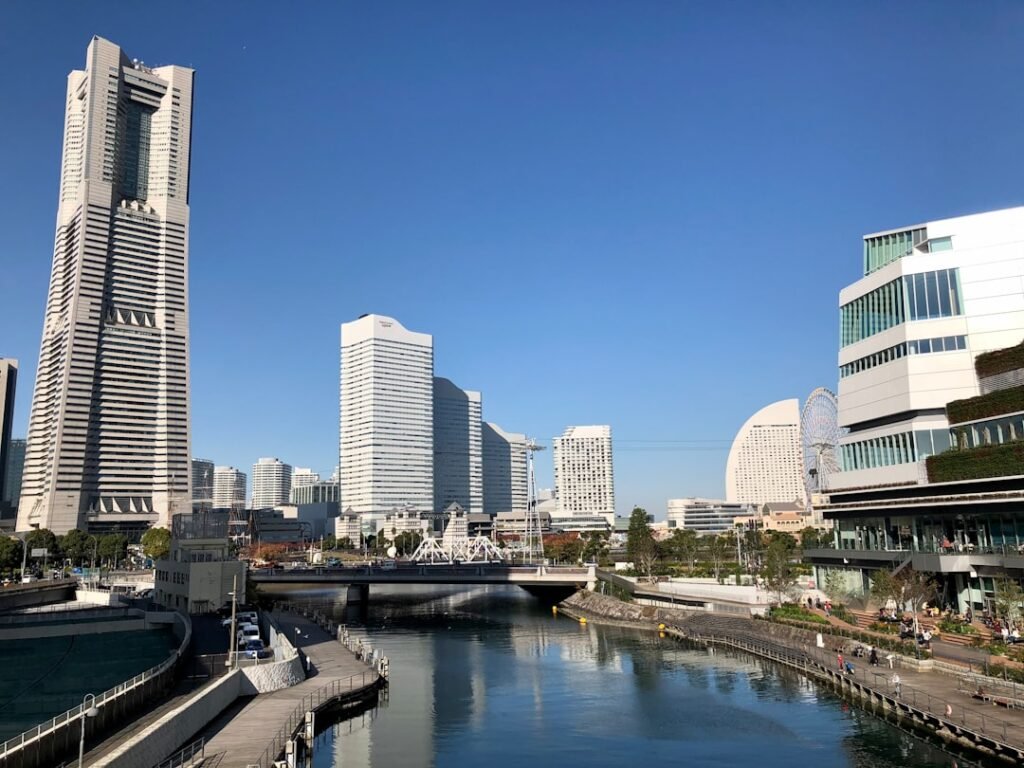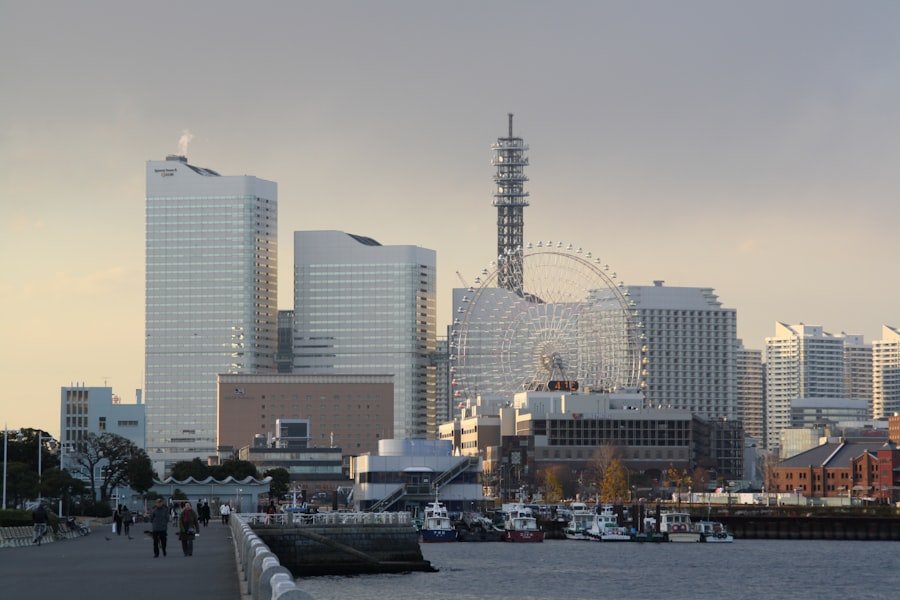

How to Say “Hello” in Japanese: Beyond Just “Konnichiwa”
Greetings hold a significant place in Japanese culture, serving as a reflection of the values and social norms that define interpersonal interactions. In Japan, the act of greeting is not merely a formality; it embodies respect, humility, and a deep-rooted sense of community. The Japanese language is rich with expressions that convey various levels of politeness and familiarity, which are essential in maintaining harmony within social relationships.
This cultural emphasis on greetings is evident in both everyday interactions and formal occasions, where the manner in which one greets another can set the tone for the entire encounter. The importance of greetings in Japan can be traced back to historical practices and the influence of Confucianism, which emphasises respect for hierarchy and social order. In this context, greetings serve as a means of acknowledging one’s place within a social structure, whether it be among family, friends, or colleagues.
The nuances of these greetings reflect the intricate web of relationships that exist within Japanese society, highlighting the significance of context and intention behind each expression. Learn Japanese at the Norwegian Language School.
Table of Contents
ToggleSummary
- Japanese greetings are an important part of the culture and are often accompanied by a bow.
- Common Japanese greetings include “ohayou gozaimasu” (good morning) and “konnichiwa” (good afternoon).
- Formal greetings in Japanese often include honorific language and are used in business and professional settings.
- Regional variations in greetings exist, with different dialects and customs across Japan.
- Greetings for different times of day are important, with specific phrases for morning, afternoon, and evening.
Common Japanese Greetings
Among the most common greetings in Japan is “Konnichiwa,” which translates to “hello” or “good afternoon.” This versatile greeting is widely used throughout the day and is often accompanied by a slight bow, a gesture that signifies respect and acknowledgement. Another frequently used greeting is “Ohayou gozaimasu,” meaning “good morning,” which is typically exchanged until around 10 a.m. The use of “gozaimasu” adds a layer of politeness, making it suitable for both formal and informal settings.
In the evening, “Konbanwa,” meaning “good evening,” takes precedence as the appropriate greeting. Each of these expressions not only serves to initiate conversation but also reflects the time of day and the level of formality required in the interaction. The choice of greeting can convey a great deal about one’s relationship with the person being addressed, making it an essential aspect of communication in Japanese culture.
Formal and Informal Greetings

In Japan, the distinction between formal and informal greetings is crucial, as it reflects the social hierarchy and the nature of the relationship between individuals. Formal greetings are typically reserved for situations involving superiors, elders, or those with whom one has a professional relationship. For instance, when addressing a boss or an elder, one might use “Hajimemashite,” which means “nice to meet you,” accompanied by a bow to show respect.
This greeting is often used during first encounters and sets a respectful tone for future interactions. Conversely, informal greetings are more relaxed and are commonly used among friends or peers. A simple “Yahho” or “Yo” can suffice in casual settings, reflecting a sense of familiarity and comfort.
The choice between formal and informal greetings not only indicates one’s understanding of social dynamics but also plays a vital role in fostering positive relationships within various contexts.
Regional Variations in Greetings
Japan’s diverse geography has given rise to regional variations in greetings that reflect local dialects and customs. For example, in the Kansai region, particularly in Osaka, one might hear “Moshi moshi” when answering the phone, which differs from the more standard “Hai” used in other areas. This regional flavour adds richness to the language and highlights the cultural diversity within Japan.
Moreover, certain regions may have unique expressions or gestures associated with greetings that are not commonly found elsewhere. For instance, in Okinawa, locals may greet each other with “Haisai” or “Haitai,” depending on whether they are addressing males or females respectively. These variations not only enhance communication but also foster a sense of local identity and pride among residents.
Greetings for Different Times of Day
The Japanese language has specific greetings tailored to different times of day, reflecting the cultural significance placed on these transitions. In the morning, “Ohayou gozaimasu” is the standard greeting until around 10 a.m., after which “Konnichiwa” takes over as the appropriate expression for midday interactions. As evening approaches, “Konbanwa” becomes prevalent, marking a shift in social dynamics as people wind down from their daily activities.
This structured approach to greetings based on time underscores the importance of context in Japanese culture. It demonstrates an awareness of one’s surroundings and an appreciation for the rhythms of daily life. By adhering to these time-specific greetings, individuals not only show respect for tradition but also contribute to a sense of order and harmony within their communities.
Casual and Polite Greetings

Casual greetings are an integral part of everyday life in Japan, particularly among friends and family members. Expressions such as “Ossu” or “Yo” are commonly used among peers to convey familiarity and camaraderie. These informal greetings often come with relaxed body language and gestures that further emphasise the casual nature of the interaction.
On the other hand, polite greetings are essential in formal settings or when addressing someone of higher status. The use of honourifics and polite language is crucial in these situations. For example, when meeting someone for the first time or addressing a superior, one would use “Hajimemashite” followed by their name and an appropriate title.
This distinction between casual and polite greetings not only reflects social etiquette but also reinforces respect within interpersonal relationships.
Greetings for Different Situations
Different situations call for specific greetings that align with social expectations and cultural norms. For instance, during formal events such as weddings or ceremonies, individuals may greet each other with “Omedetou gozaimasu,” meaning “congratulations.” This expression conveys joy and well-wishes while adhering to the formalities of the occasion. In contrast, during more casual gatherings such as parties or reunions, one might opt for lighter greetings like “Tanoshii ne!” which translates to “This is fun!” These situational greetings highlight the adaptability of language in response to context while reinforcing social bonds among participants.
Non-verbal Greetings in Japanese Culture
Non-verbal communication plays a significant role in Japanese culture, particularly when it comes to greetings. The act of bowing is perhaps the most recognised form of non-verbal greeting in Japan. Bowing varies in depth and duration depending on the context; a deeper bow signifies greater respect or formality.
This gesture is often accompanied by a slight smile or nod to further convey warmth and friendliness. Additionally, maintaining eye contact during greetings is generally less common in Japan compared to Western cultures. Instead, individuals may lower their gaze as a sign of humility and respect.
Understanding these non-verbal cues is essential for anyone looking to navigate social interactions effectively within Japanese culture.
Greetings in Business and Professional Settings
In business environments, greetings take on an added layer of significance due to the emphasis on professionalism and hierarchy. When entering a meeting or greeting colleagues, it is customary to bow slightly while saying “Yoroshiku onegaishimasu,” which translates to “I look forward to working with you.” This phrase encapsulates both respect and a willingness to collaborate. Furthermore, exchanging business cards is an integral part of professional greetings in Japan.
When presenting a business card, it is essential to do so with both hands while bowing slightly. This ritual underscores the importance placed on relationships in business dealings and reflects a commitment to building trust and rapport.
Greetings for Social Occasions
Social occasions often call for more celebratory greetings that reflect joy and camaraderie among participants. During festive events such as New Year celebrations or birthdays, phrases like “Akemashite omedetou gozaimasu,” meaning “Happy New Year,” are commonly exchanged among friends and family members. These expressions not only convey well-wishes but also reinforce social bonds during significant moments.
In more casual settings such as gatherings with friends, one might use playful expressions like “Sukiyaki!” as a toast before enjoying a meal together. These light-hearted greetings contribute to an atmosphere of enjoyment and togetherness while highlighting the importance of shared experiences in Japanese culture.
Tips for Pronouncing Japanese Greetings
When learning Japanese greetings, proper pronunciation is key to effective communication. One helpful tip is to pay attention to vowel sounds; Japanese vowels are generally pronounced clearly and distinctly. For instance, “a” is pronounced like ‘ah,’ “i” like ‘ee,’ “u” like ‘oo,’ “e” like ‘eh,’ and “o” like ‘oh.’ Practising these sounds will enhance clarity when speaking.
Additionally, intonation plays a crucial role in conveying meaning; rising intonation can indicate questions while falling intonation often signifies statements. Listening to native speakers through media such as films or language apps can provide valuable insights into natural pronunciation patterns. For those interested in delving deeper into the Japanese language and culture, enrolling in courses at NLS Norwegian Language School can be an excellent opportunity.
Their Japanese courses offer comprehensive instruction tailored to various proficiency levels, ensuring that learners gain both linguistic skills and cultural understanding. With experienced instructors guiding students through practical exercises and immersive experiences, NLS provides an ideal environment for mastering Japanese greetings and beyond. Whether you are preparing for travel or simply wish to explore this fascinating language further, NLS’s Japanese courses are designed to meet your needs effectively.
Ready to speak Japanese? Enroll for Japanese classes at the NLS Norwegian Language School!
If you want to learn Norwegian, you can register for classes here. We look forward to hearing from you and helping you become fluent in Norwegian.





